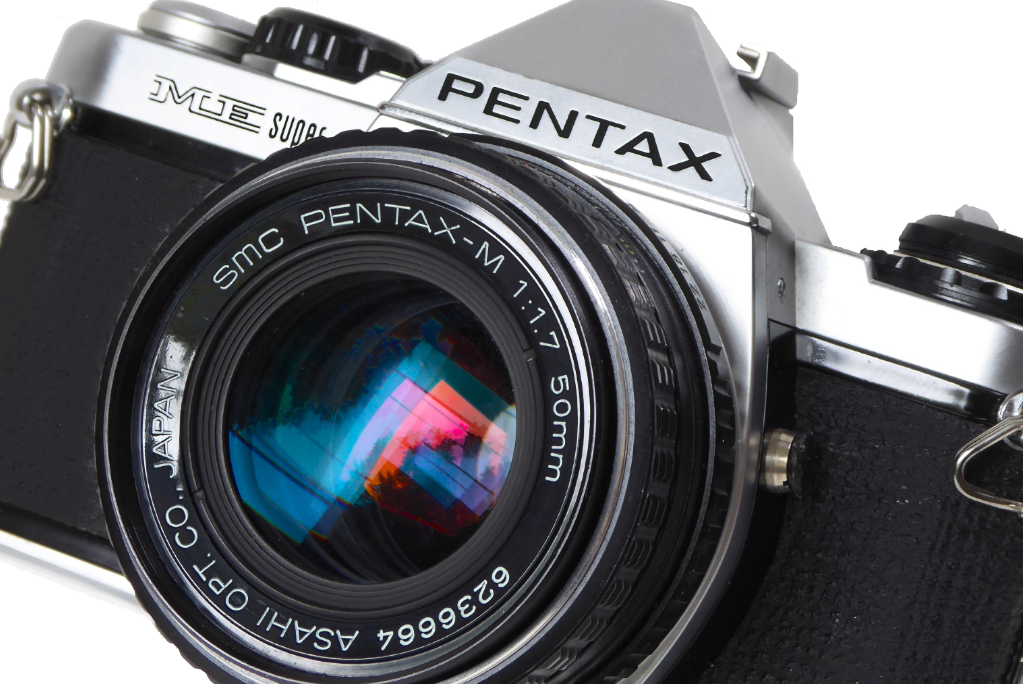
The Pentax ME Super Review – how much do I love it? For those with a short attention span there’s an answer at the bottom of the page but before I get on to that lets have a look at its history…
The 1970s were a fast moving period of the camera industry. In 1972 Olympus unveiled the Olympus OM-1 whose dinky size redefined what a 35mm SLR should look like. Prior to the OM-1 cameras had bloated in size. The OM-1 forced manufacturers to look at redesigning their gear into smaller physical dimensions. Many fine cameras fell victim to this. A second theme was also running through the 1970s though – along with the size reduction there had been a push to automation to provide the camera with some ‘smarts’ to help the less technically minded people.
In 1976 Canon dropped the ground-breaking Canon AE-1. It wasn’t a great camera in terms of technical performance but it was the first in the market with affordable automation in the form of shutter priority to try and reduce the complications for the less than technically accomplished photographer while retaining full manual control, Canon sold millions of them and of course the other manufacturers were forced to respond.
Pentax were quick out of the blocks with the ‘M’ Series cameras starting with the Pentax ME the same year as the AE-1 debuted. The ME would offer aperture priority but had no manual mode beyond a simple mechanical back up speed of 125th. The ME went on to become a much liked camera for the less than technically minded shooter but it was fundamentally a point and shoot 35mm SLR camera. It had no manual mode offering only a fixed 100th manual back up in case of battery failure and an exposure compensation control to slant the automatic exposure system by up to 2 stops. The ME was a nice camera in many ways, simple and reliable, using a reliable Seiko vertical metal shutter AND it also had a dinky size like an Olympus OM1.
Most likely Pentax were beavering away on this prior to the Canon AE-1 launching as it launched the same year as the Canon AE-1 and its Pentax running mate the fully mechanical Pentax MX which was the more direct competitor to the Olympus OM-1.
The MX featured a dinky size (smaller even than the OM-1) and a near identical specification to the Olympus giant killer but shares nothing with the ME or ME Super other than the letter ‘M’.
The MX was undoubtedly aimed at the old school photographer more used to full mechanical operation and no aids where the ME was designed with the novice in mind. The ME would achieve some success and push on and sell an estimated 1.6 Million units. Small fry compared to Canons AE-1 which would rack up a million in its first year and go on to see over 6 million units cranked out thanks to a million dollar marketing campaign.
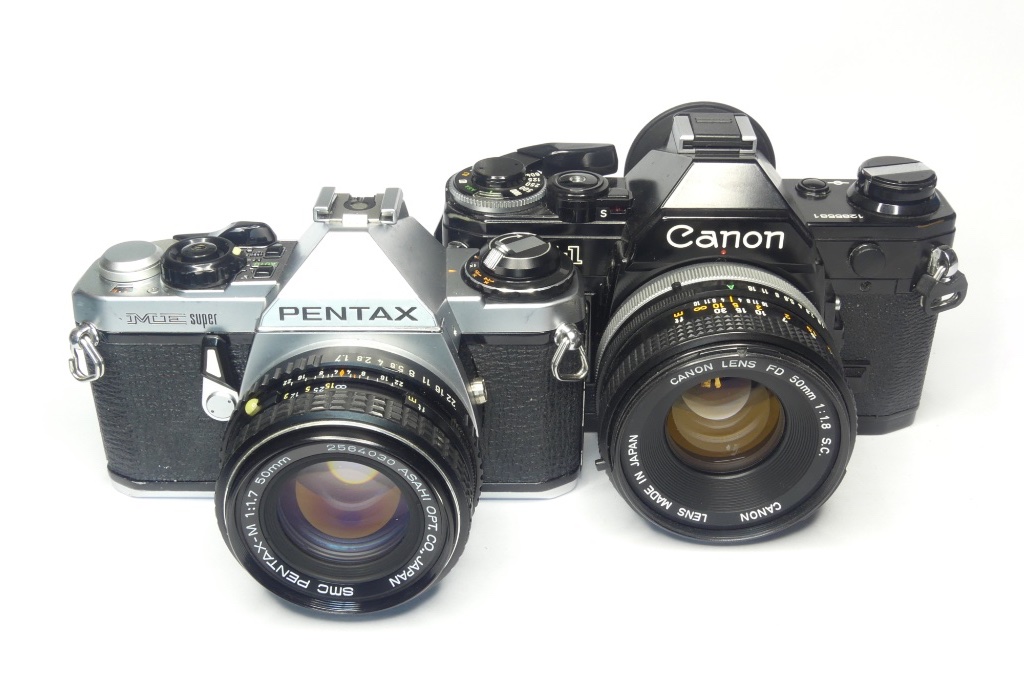
To up the ante and get a camera that would have broader appeal Pentax went on and developed the ME Super which released in 1979. Using the base of an ME the Super added full manual control of the camera with a manual back up speed of 125th in case your batteries died. Most would probably spend their lives in Auto mode but the manual control allowed a more experienced photographer to have better creative control of the camera and this is where I came into the party.
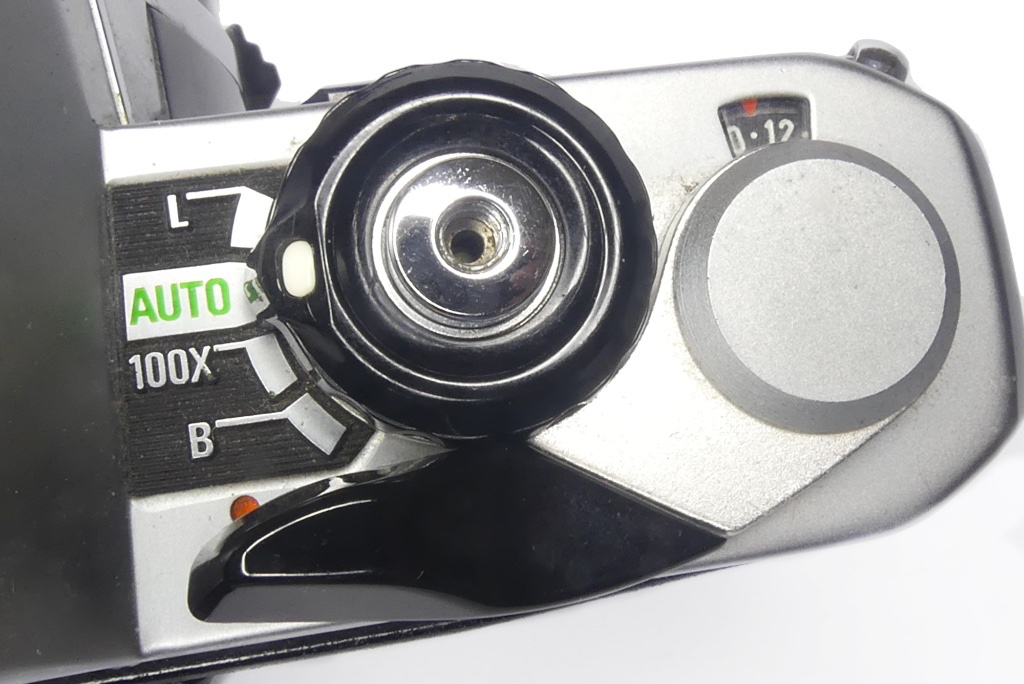
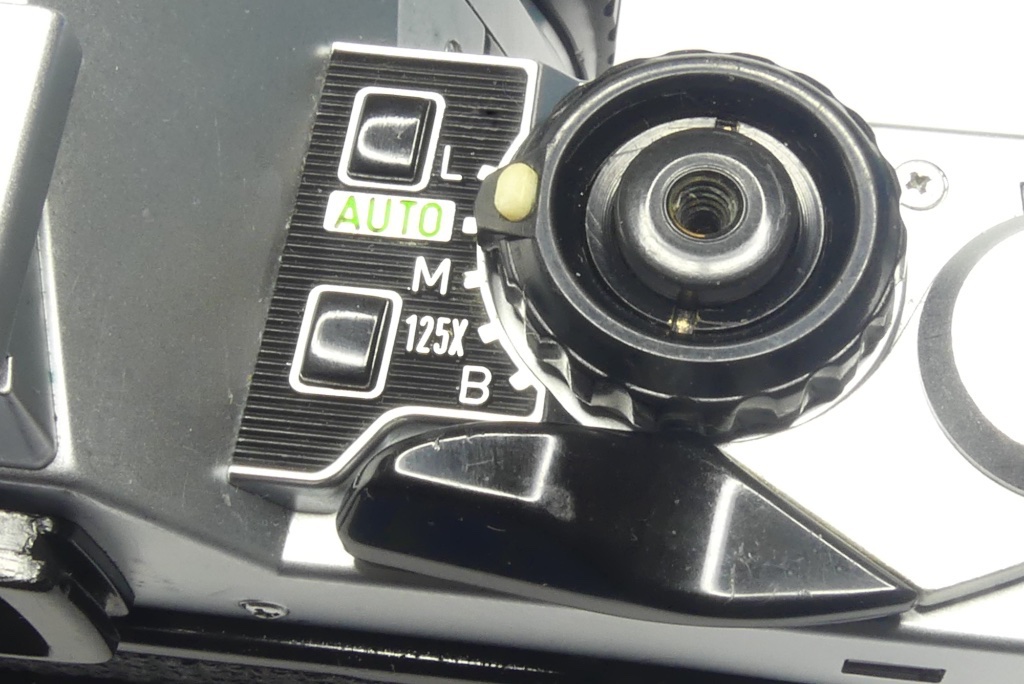
The ME Super – My part in its history….
I bought the ME Super way back when they were still churning them out around 1980. I bought it as a lightweight camera for holidays as my Nikon Fs were a heavy old beast to lug around and I wasn’t too keen on exposing them to risks in places like the beach – the beach is always a potential killer for cameras with all that sand and salt water around not to mention the kids kicking sand in your face.
I had already tried new fangled electronic cameras like the AE-1 and didn’t much like it. It was, and still is as far as I am concerned, the worlds worst camera for ergonomics and has a cheap and nasty feel.
I had grown up with Spotmatics and had a kind of on/off love affair with Pentax at the time and had in fact set off to the camera shop to buy myself a nice lightweight camera. I had an MX in mind. However, once in the shop I was persuaded to buy an ME Super – the promise of automation with manual override seemed nice and the camera handled well in the shop, it was lightweight, slick and after agonising over the ME-Super versus the MX I decided that cheaper was better as the camera would pretty much only be used for holiday snapshotting. I’d eventually get to shoot the Pentax MX 40 years later!
The MX was around the £199 price from memory and the ME Super was being blown out for around the £149 price so it was about 25% less expensive. That doesn’t sound so much today but in 1979 £25 was worth quite a bit more – the average Joe was only taking home around £75 a week in pay and had to cough up for keeping a roof over his head and food on the table out of that. The 1970s and early 1980s were a finance companies wet dream for consumer credit and cameras were one of the expensive luxuries they were making their commissions on.
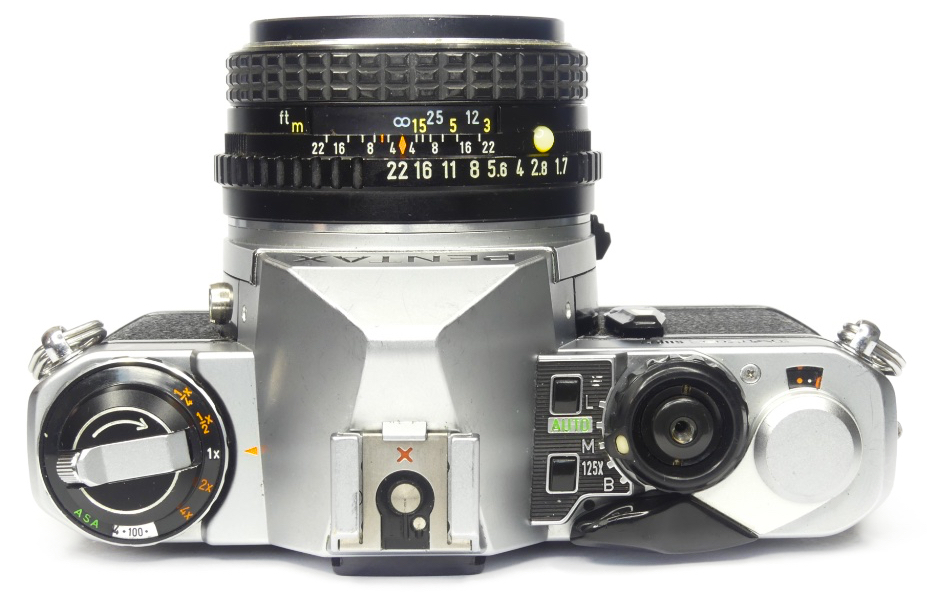
As things turned out the ME Super was only used on a single holiday. It was a nice snap shooter and returned reliable results but use out in the field and outside the cosy confines of a camera shop soon showed up its weaknesses.
The manual control of the shutter is achieved by two buttons which cycle the shutter speed control through the range of shutter speeds either up or down. To know what speed you have selected you have to have your eye to the camera and watch the LEDs shifting to know what you have set. In bright light the LEDs were faint and hard to see plus if changing shutter speeds from a fast 500th to a slow 1/60th you had to be pressing the shutter speed plus or minus buttons a fair few times. It was slower and more finicky than simply having a rotary control on the top of the camera. With a more conventional control layout you could quickly look at the top of the camera and spin the shutter speed control to the setting you wanted. With the ME Super you had to put the camera to you eye, fumble for the up/down buttons and press 4 times to move from 500th to 1/60th while keeping an eye out that the camera had followed each press of the button. Now to be fair most people would use the camera in full auto and just control the exposure via the exposure compensation but for a photographer more used to fully manual control, just like the AE-1, I found the ME Super a pain in the thermal exhaust port. As a snapshot/swinger type 35mm SLR camera though it was probably without equal and mine called exposures mostly perfectly. The camera controls on the whole, despite me grouching about the somewhat fiddly up/down buttons, were well laid out with a good feel and the advance feel was superb, very smooth. Like many other Pentax cameras from this period the camera has a ‘shutter armed’ indicator to show that the camera has wound on and is ready to shoot. It’s a small red dot that shows on the top deck near the tip of the advance lever. Like most prosumer cameras there is also a shutter lock button.
Things I liked with it were its very compact size, the very smooth film advance and its very smooth but positive shutter release and a film transport indicator to show film is being taken up which is quite reassuring as the film take up spool I found was also a bit fiddly.
The viewfinder was also rather good being very bright with a finely ground matte field plus the split image focus ring allowing for easy and precise focusing. The ME-Super did have a noticeable amount of mirror slap though despite the use of an air piston. Pentax used multiple rubber stops inside the camera plus an air piston to reduce slap and noise which is often a problem in small light weight camera bodies. Its not super bad on the ME Super and I have certainly shot cameras with far with worse issues than a small amount of mirror slap.
The shutter on the ME Super was a Seiko vertical metal shutter under electronic control and testing on serviced unit today shows it runs very well with very accurate shutter times. On the whole I found it a sweet camera to shoot with back in the day and certainly nicer than the Canon AE-1 especially for use as a fuss free snapshot type camera.
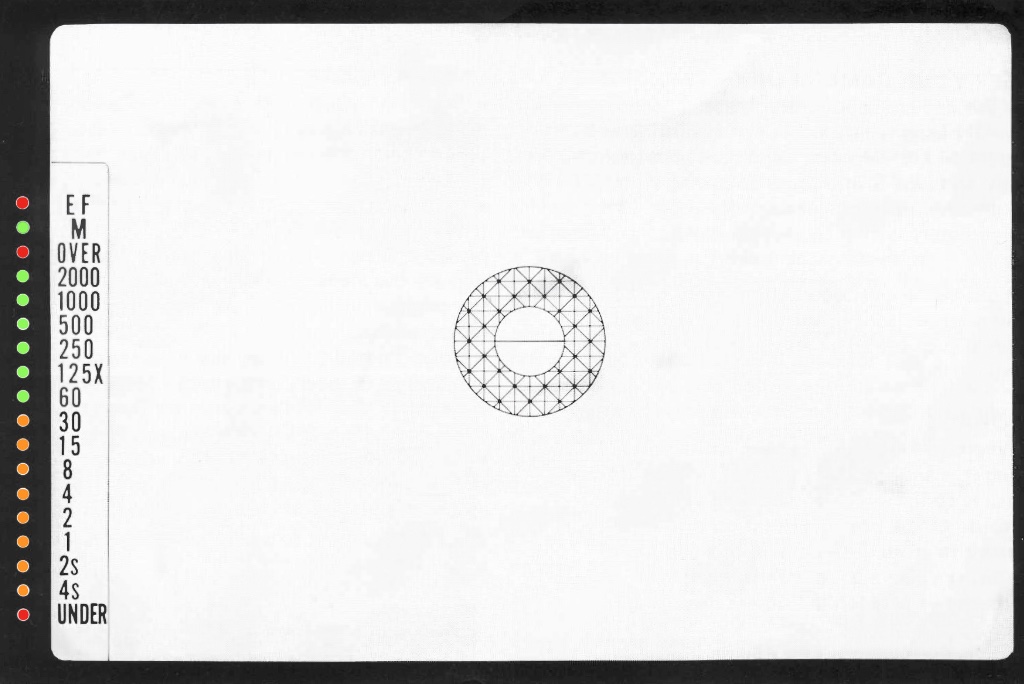
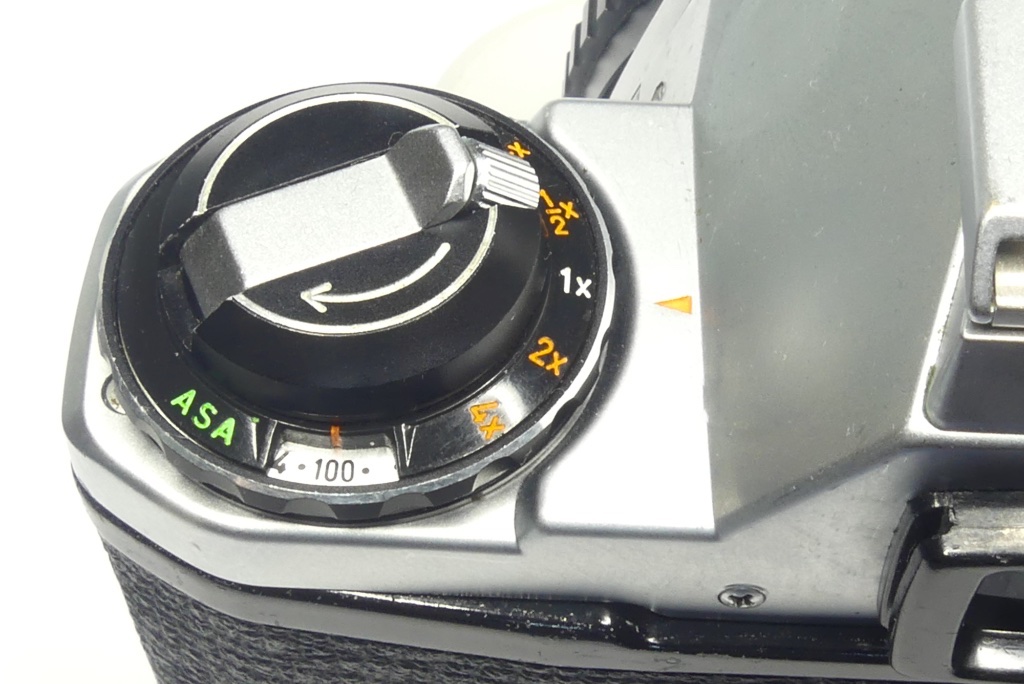
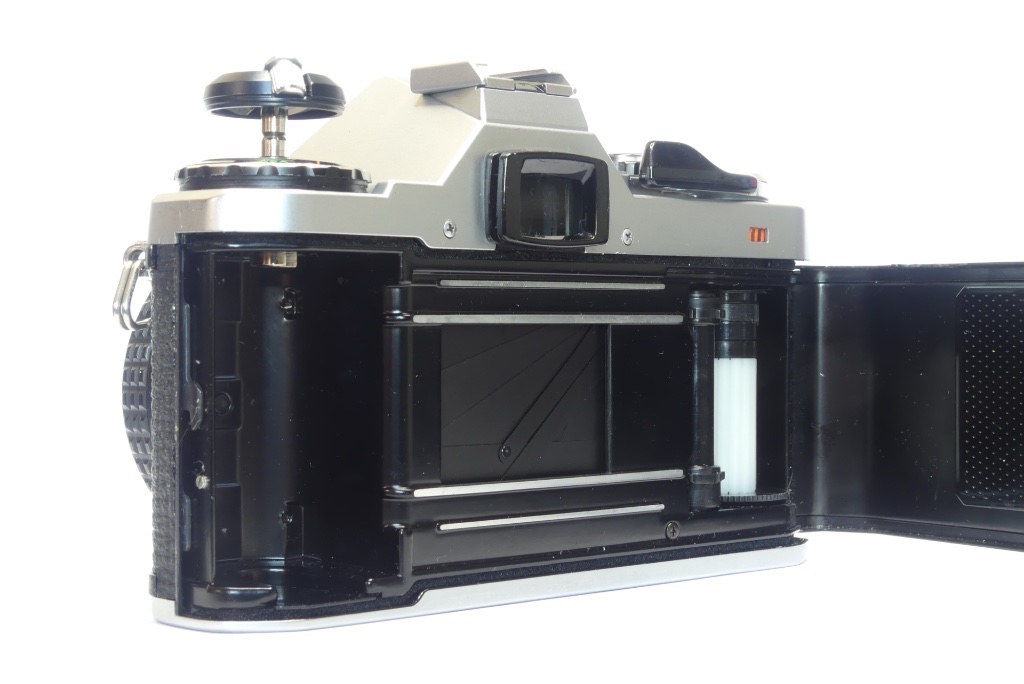
The viewfinder as mentioned is nice and bright and has a simple to read display at the side of the view showing a range of LEDs which indicate the speed the camera will shoot at if in auto or what it wants you to shoot at if in manual. In manual mode you can set aperture and then nudge the speed buttons until the camera shows a green LED on the speed display or you can choose to set your shutter speed and then twist the aperture on the lens until you get a solid green LED on the speed you selected. It’s quite simple and intuitive I just wish they had made the LEDs a bit brighter. There are also red warning LEDs to alert you to over and under exposure and exposure compensation being used plus slow speeds are lit in orange to indicate it’s too slow for hand holding the camera. As a package It was really well thought out for the novice.
Reliability back in the day, at least for mine, was good with no issues albeit mine had little use but I did run into a Pentax salesman sometime after I sold mine who told me reliability with the ME Super had been an issue and many dealers were either hosing them out cheap or refusing to stock them due to returns issues. I found that strange at the time as it seemed a well made piece of gear. But experience with them recently on a repair bench has shown the possible weaknesses in the camera which may well have been present back in its day.
The ME Super today…
The biggest headache with old ME and ME Supers today is the vast amount of internal foam inside them which decays and causes problems plus the various rubber stops and bumpers which, like light seals, decay into gloop and gunge and jam the camera up – you can read more on this in an article here.
To keep the racket down when shooting Pentax used three rubber washers on the mirror box assembly to act as cushions and very often the ME and ME Super will fail as these turn to glue and start to jam the cameras internal mechanisms resulting in either complete shutter jams or the cursed ‘endless wind on issue’ where the camera will just allow you to keep winding on without ever being able to release the shutter. In addition there is a rubber washer inside the air piston which degrades and slows the mirror down causing the camera to stall between shots. This presents as a condition rather similar to the Canons AE-1 famous ‘cough’ where the mirror becomes slow to return.
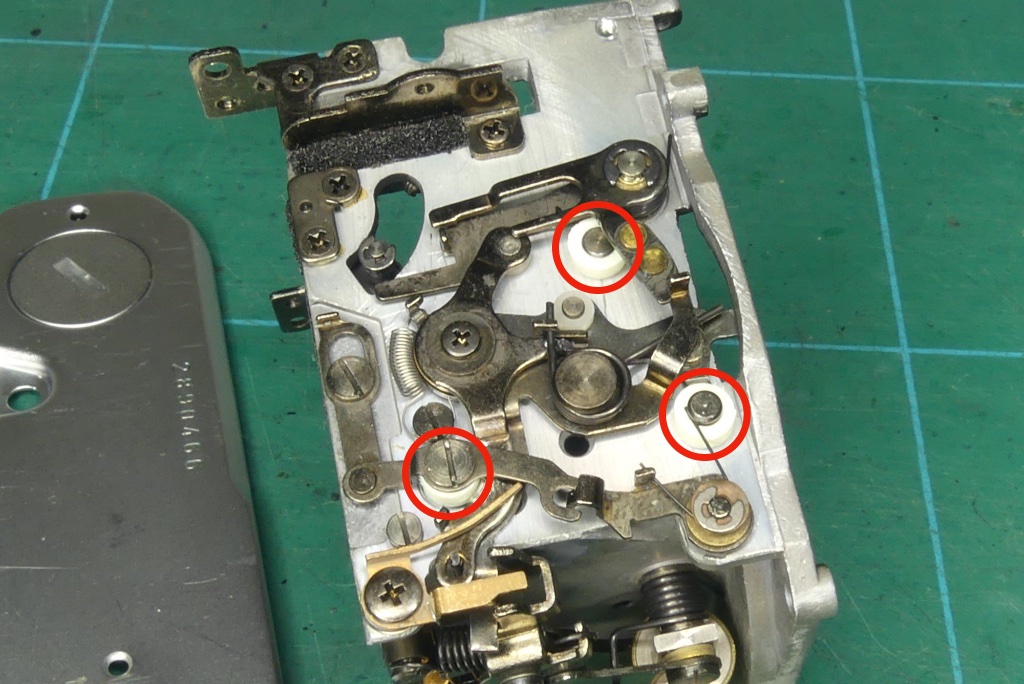
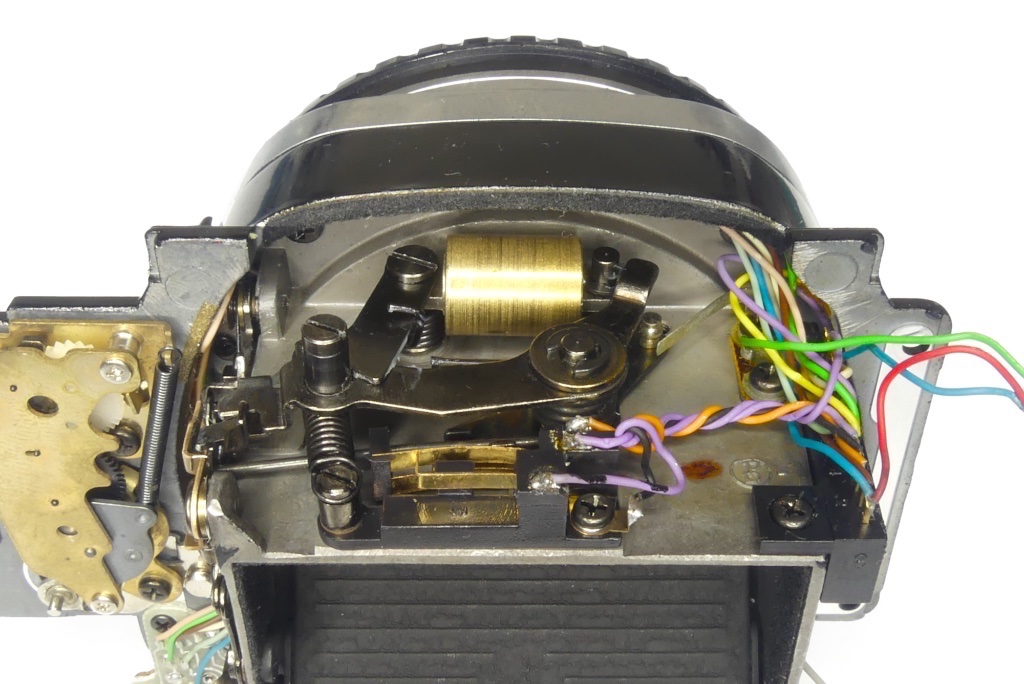
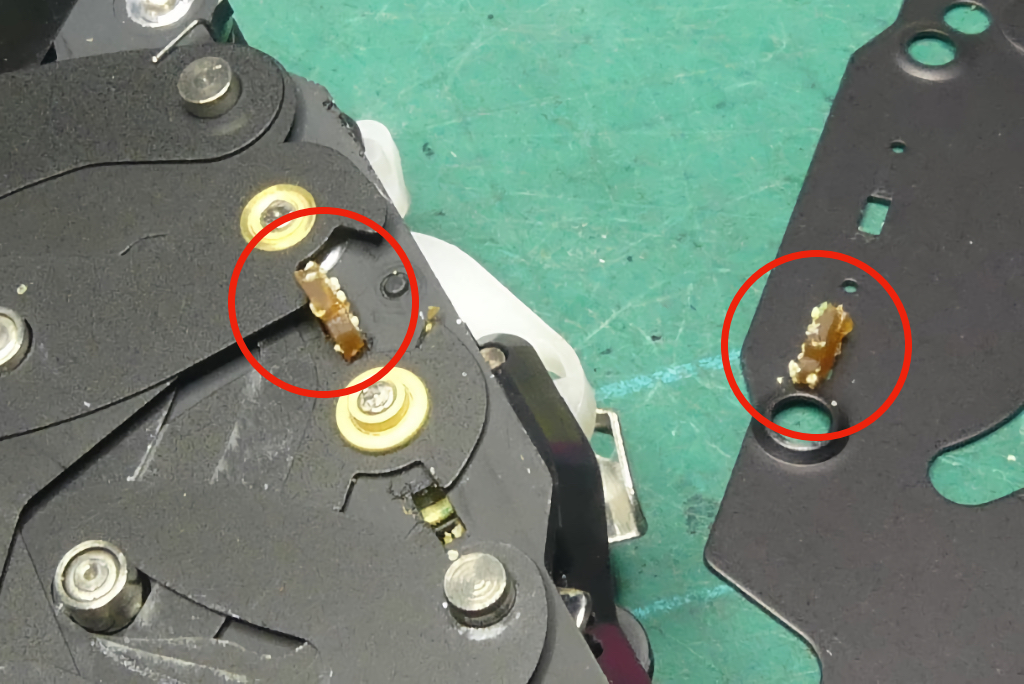
There is further bad news inside the ME and ME Super where the Seiko shutter also used small rubber stops. Like the rest of the rubber inside the camera these start to perish and eventually jam or slow down the shutter.
Even if the camera runs the focus screens are often dirty from decaying foam falling into the top part of the screen. The ME and ME Super use quite a complex layout of foams around the focus screen and prism and one of the worst offenders is the light seal foam around the LED array – as it decays it scatters dried out pieces of foam onto the top of the focus screen and the only solution is a near total disassembly of the camera to get it out. Pentax in fact provided a small blow hole so that an air compressor could be used to blow out dust from the top of the screen but it wont help remove sticky nasty foam seal crud and removing the cover for the blow hole nearly always ruins it and there are of course no replacements available today.
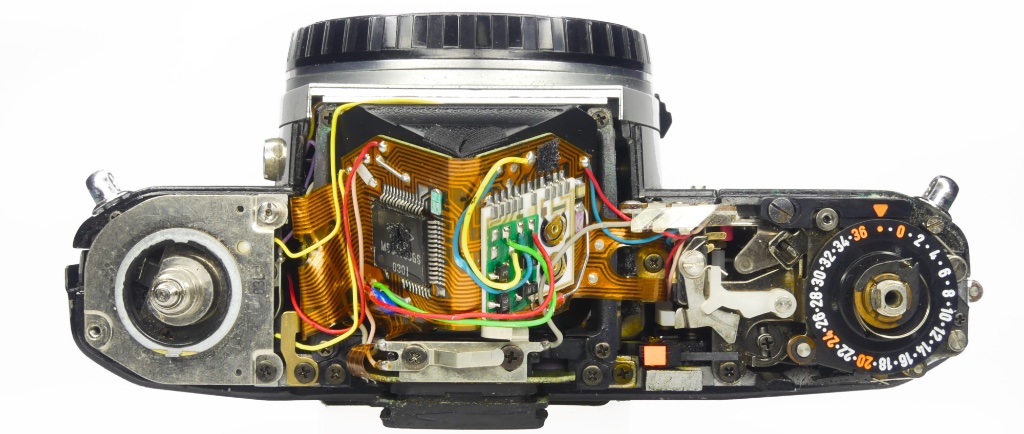
The third big fault that ME Supers suffer is damage to the very fragile flexible circuit board. Thanks to its plastic top cover it is possible for a bad bump on the top cover to damage the very fine flex tracks and result in electronics issues. As part of the general cost cutting going on the industry when the ME Super was released its top cover was made of a quite thin and flexible plastic making it somewhat less durable than its forebear the ME which was more solidly made with a metal cover.
The cost of servicing an ME Super today is rather high due to the very large amount of work that has to be done to rid the camera of its very many foam seals and rubber bumpers and replace these with fresh parts. The ME Super is probably the worse for foam as it requires multiple thicknesses of 1mm, 1.5mm and 2mm foams plus the hand made rubber bumpers and air piston seal.
On the bench the ME Super and the ME show really excellent production engineering, the internal layout is extremely good and the camera was clearly designed with ease of production and repair in mind. There are things like a large edge connector to cut down on end to end wiring (when you see inside a Canon AE-1 or a Minolta X-500 the difference is chalk and cheese with both of these having birds nest looking wiring). I suspect back in the day when Pentax were doing repairs the camera was designed to be highly modular allowing for fast replacement of whole units sub-assemblies like the shutter, mirror box, flexboard etc quickly and easily.
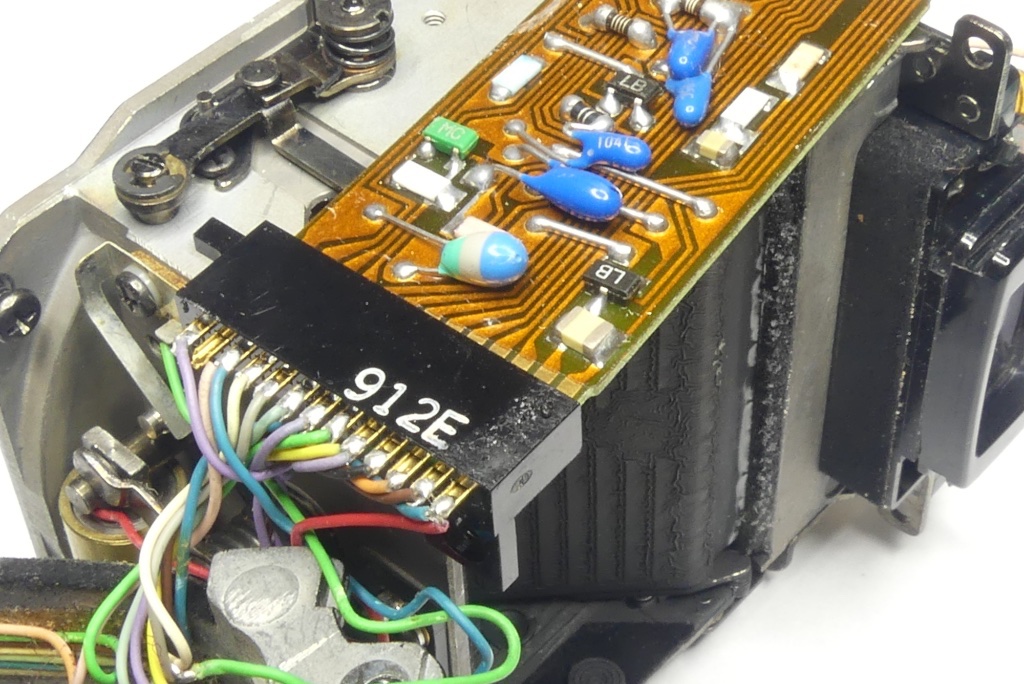
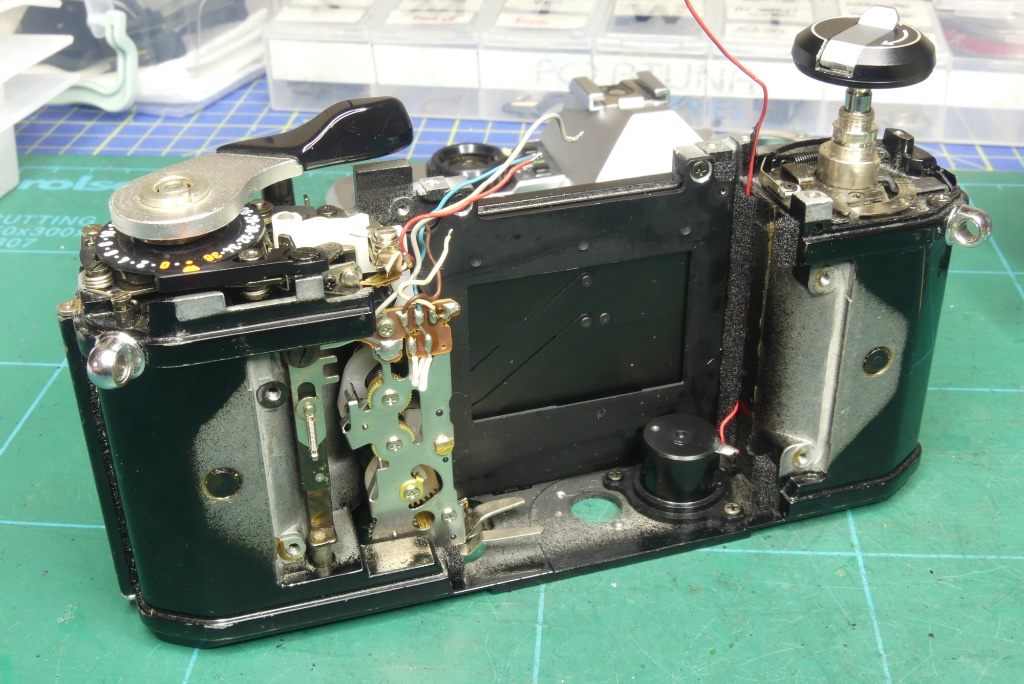
Like almost any electronic camera if electronic issues arise it can be very hard to diagnose issues and it’s further hindered by almost no information from Pentax service manuals. With that said the ME Supers ICs seems to fare better than some other cameras and on the whole its electronics seem reliable.
I have serviced a few of these and even created a service guide for them and when fully serviced they are sweet to shoot with. Really rather nice in fact. The shutter speed control push buttons seem less of an issue to me now than they did in back in the 1980s. Maybe that’s just me being happier with the push button world my generation has created or it maybe I am less fussy (age does that to you). I used one of the serviced units for some test shoots and found myself rather enjoying the cameras fuss free approach and it might very well suit some of today’s younger film fans.
In a nutshell it’s a sweet camera when running and quite delightful to work with. Whether yours keeps running or not depends on what you want to spend.
The camera was originally sold with the ‘M’ series 50mm f1.7 which is a nice lens but like the camera this particular model of lens has often not fared well due to age. Many of them suffer an internal hazing on one of their cemented rear lenses. These are impossible to repair. The 50mm f1.7 though, when in good order, is a really nice lens – It’s sharp and renders colours very well.
Beyond the ME Super…
The ME Super went on to sell an estimated 2.3 million units before it was discontinued in 1987. A respectable number and roughly equivalent to all of the non-Chinese made K1000s. Unlike the K1000 I suspect a lot less are around today given the cost of repairs to them. Many have probably found their way to landfill due to the internal rubbers failing which is a shame really.
Pentax pressed on with other developments like the lower cost MV and MG variants and the ME Super became the base for the first Pentax auto-focus system the ill-fated ME-F. This was a dogs dinner of a camera and sold only an estimated 80,000 units. You can read up on the disaster that was the ME-F here. This is a camera that is near unrepairable today and a friend of mine who majors on Pentax repairs told me if you ever see one of these then unless you want a shelf queen for a collection the best thing to do is run away.
The ME Supers basic design as used in the Super A although Pentax learned their lesson about the shutter rubbers and these were removed in the Pentax Super A but the A can still suffer a range of maladies caused by its internal foams.
By the end of the ME Supers production run Pentax were on the ropes and by 1997 it would all be over anyway with the emergence of digital cameras.
The ME Super – So how much do I love it?
Not enough to keep one after 30+ hours work to repair and service it but… it was close. In its day it was a nice swinger camera, lightweight, fuss free and quite pleasant to use. An easy to use aperture priority camera with the capability to go fully manual should it be required. Back in the good old days I was somewhat less than happy with it but I’d be happy enough with one today if its been fully serviced and its foams and mirror bumpers replaced and theres the rub.
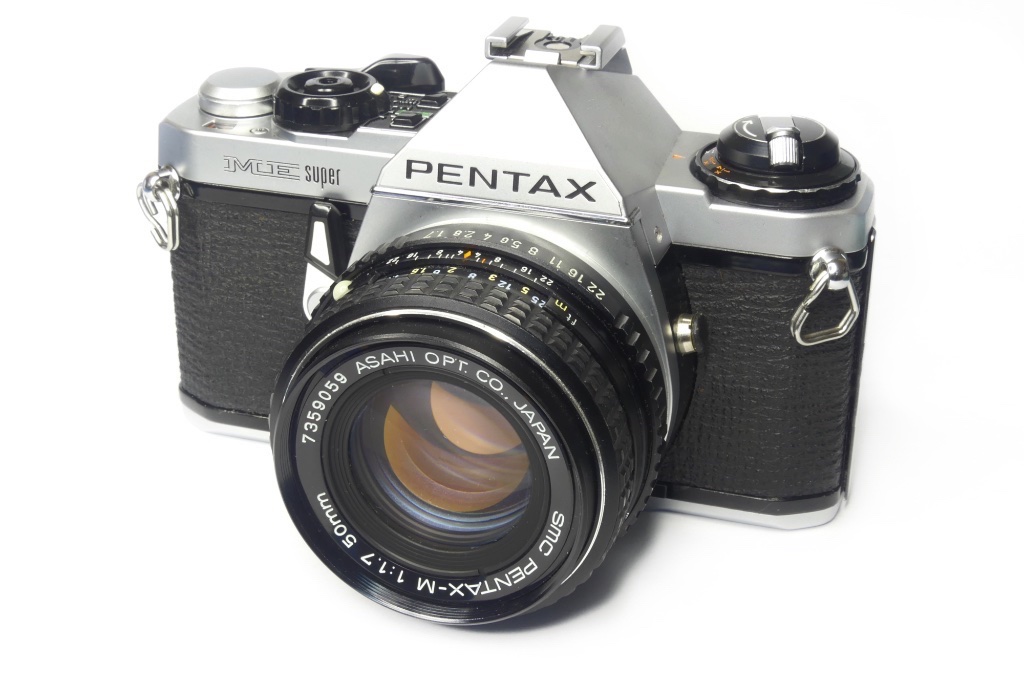
Working on these is a nightmare. It’s not the worlds easiest camera to work on and just cleaning all the old foam and rubber washers out can consume a great deal of time and effort. I did toy with the idea of keeping one of the fully serviced ones for my own use but in the end rejected it. Why? Well, simply because I have more capable cameras already but, like the MX which I also agonised over before selling it, I did give it serious consideration.
It’s a sweet shooter when fully working and I still toy occasionally with the idea of getting another one for myself. That has to tell you something about the camera when an old ex-pro kind of hankers for one.
If you really want one then expect to pay around the £175 mark for a fully serviced body with all new foams and rubbers and buy only from a trusted source. Anything else will be playing lotto with precious memories and £14 a time rolls of film.
Further Reading
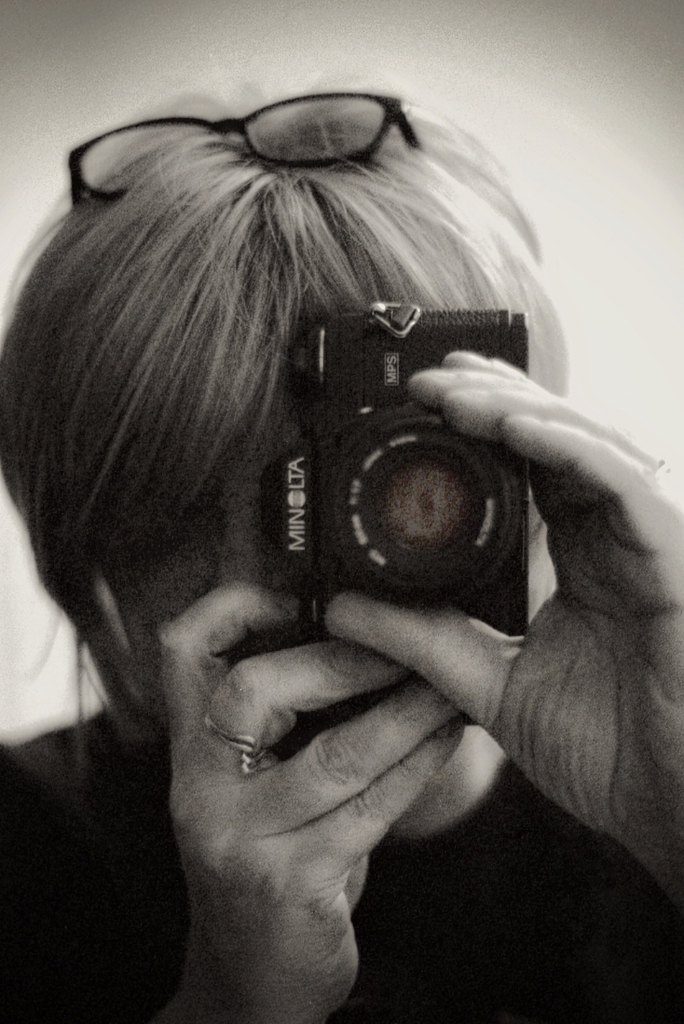
Mel is one of the driving forces behind High 5 Cameras and writes all our articles.
Starting serious photography back in 1972. Over the years she got to shoot film with most of the major brands in 35mm and large format as both a studio photographer and content provider for websites in the early life of the web. These days she is rediscovering photography and has become the GOTO person for knowledge on camera repair advice.


I’ve owned the plain ME and the ME Super — and where I sold the Super on, I kept the plain ME. The manual mode was just not intuitive enough to use regularly, so I quit using it. Then I realized that the camera offered me nothing over the regular ME!
I loved seeing the camera in states of disassembly as you worked on it.
Thank you for this timely article! I’ve collected set of ten ME Supers and have been preparing them as a gift to a middle school film photography club I volunteer at. Seeing 12-15yo kids interested in film photography is an amazing feeling!
I brought in a few different cameras for the club to try out–keeping it down to relatively inexpensive easy to find cameras–Pentax Spotmatics, ME Supers and K1000s; Minolta SR-Ts; Nikkomats; and Canon FTs/AE-1s. The group of mostly girls (one boy actually) unanimously chose the ME Supers for the shutter speed buttons, small size and low weight of both the body and M-50mm/2, the self timer, and it being the easiest to load for them. It’s also really convenient to be able to teach them Sunny 16 with FP4 @125 ISO using the unmetered 1/125 sync setting, because the can immediately see if they got it right switching to metered manual.
In regards to repairing ME Supers–I’ve seen lots of opinions on whether to replace the rubber mirror box bumpers or simply remove them. If one does replace them there’s further debate on what to use. I’ve gone down the road of cutting PFTE tubing to size, but have still yet to find a solution for the air damper. I however did not think to go as far as you seem to have gone with the shutter box, but I did use DeOxit on all of the electrical contacts to help prevent corrosion and battery compartment issues.
Wow this is also super timely, I just inherited one. It has the infinite wind issue, which I’d like to fix but I like my Pentax MX too much to really bother.
The shutter speed push buttons I can live with, but the final straw for me was that little white button you have to press to turn the mode dial. Super frustrating!